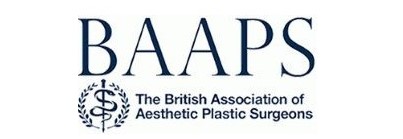Bilateral Breast Reduction (Reduction Mammaplasty)
What is a breast reduction procedure?
This is a cosmetic surgery procedure to reduce and reshape the breasts. If both breasts are abnormally heavy the procedure is carried out on both sides (bilateral). Sometimes there may be asymmetry in breast size and if one breast is abnormally larger than the other, a one sided (unilateral) reduction can be carried out to achieve a more symmetrical appearance.
Why do people seek a bilateral breast reduction?
The problems that women can experience from excessive breast heaviness can be both physical and psychological. The physical symptoms include heaviness, soreness under the breasts (intertrigo), grooving from shoulder straps, neck and back ache.
Women may also feel self-conscious about their breast size and find difficulty with well-fitting clothes and participation in sports activities.
What does the surgery involve?
This type of surgery is carried out under a general anaesthetic. The length of stay in hospital is 1 to 2 nights. There is initial discomfort after the operation which can be controlled with pain relieving medicine.
At the time of the procedure drainage tubes are inserted on both sides and removed after approximately 24 hours. Dissolving stitches are used to close the wounds which means that no stitches usually need to be removed afterwards.
What happens after surgery in the recovery period?
Recovery from this type of surgery takes several weeks. A well-fitting sports type bra will need to be worn in the initial period after the surgery. It will be several weeks before the final size of the breasts is obvious.
The new shape and size of the breast is still affected by major fluctuations in weight and also over time by gravity. Sometimes minor adjustments may be required under local anaesthetic at a later stage to remove a small area of excess skin and fat at the sides of the scar.
Are there any risks associated with bilateral breast reduction surgery?
Any surgical operation is associated with risks. Some risks may be related to the anaesthetic, some are general to any procedure and others specific to this type of surgery.
Common specific risks include swelling, bruising and temporary sensory change of the nipple after the surgery. The breasts may be slightly tender or have areas of lumpiness that usually settle down after a few weeks to months.
Less commonly infection, poor wound healing, asymmetry, fat necrosis, nipple areolar complex loss or permanent sensory change of the nipple can occur. Bleeding can also occur after surgery requiring further surgery to wash out a collection of blood.
The timing of surgery is an important consideration particularly in younger women as a breast reduction procedure is likely to affect breast feeding.
General complications relating to any surgical procedure include the risk of a chest infection, deep venous thrombosis (lower leg clot) or pulmonary embolus (blood clot in the lungs).
Scars after breast reduction surgery
There are scars on the breast after this procedure. They are designed to be hidden whilst wearing clothes. The pattern of scarring depends on the surgical technique used but usually forms an inverted T shape.
The type of scar that a patient forms depends not only on the surgery but on that individual person’s genetic make-up. Although permanent, they usually settle well, fading after 1 to 2 years.
Some people however may develop red, raised, stretched or irritable scars that require further treatment. In most women the scars settle and are accepted as a consequence of achieving a smaller breast size.
Breast size following surgery
This should be discussed with your surgeon preoperatively. It may take several months following surgery before the exact breast size becomes obvious. A realistic estimate of final cup size can be provided by your surgeon however not an absolute size.
It is very important for you to discuss your expectations with your surgeon and to be realistic about them as this is the key to maximising the likelihood of your satisfaction with the result
Case 1
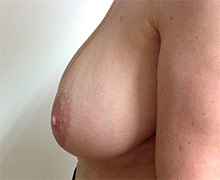
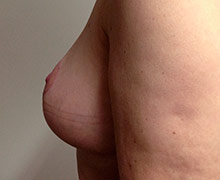
Case 2
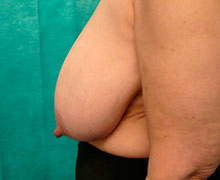

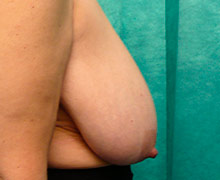
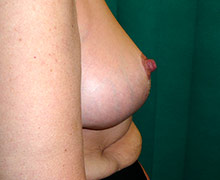
Case 3

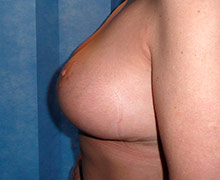

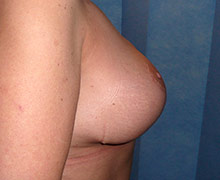
Find more impartial information at the BAAPS website here.





